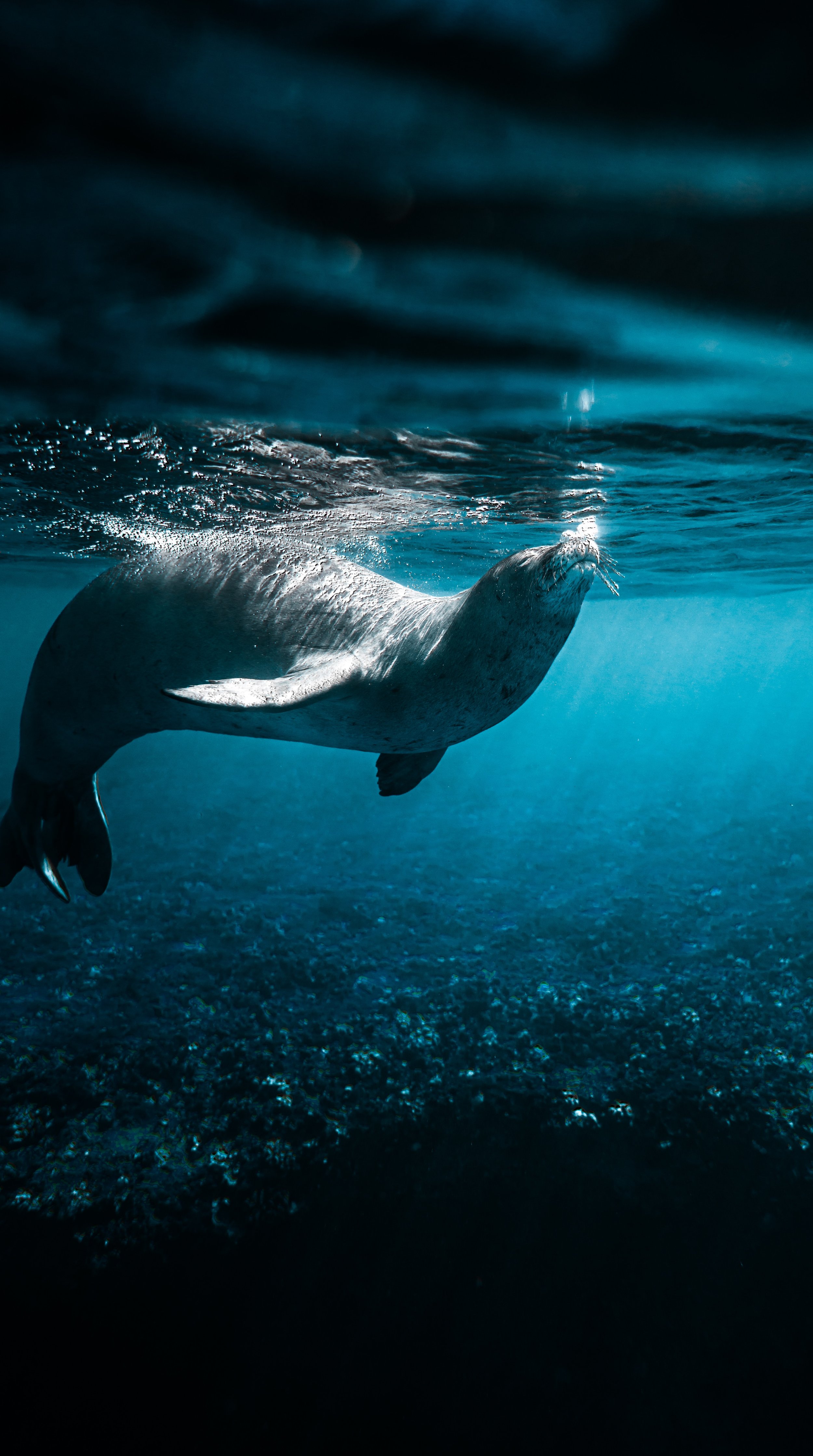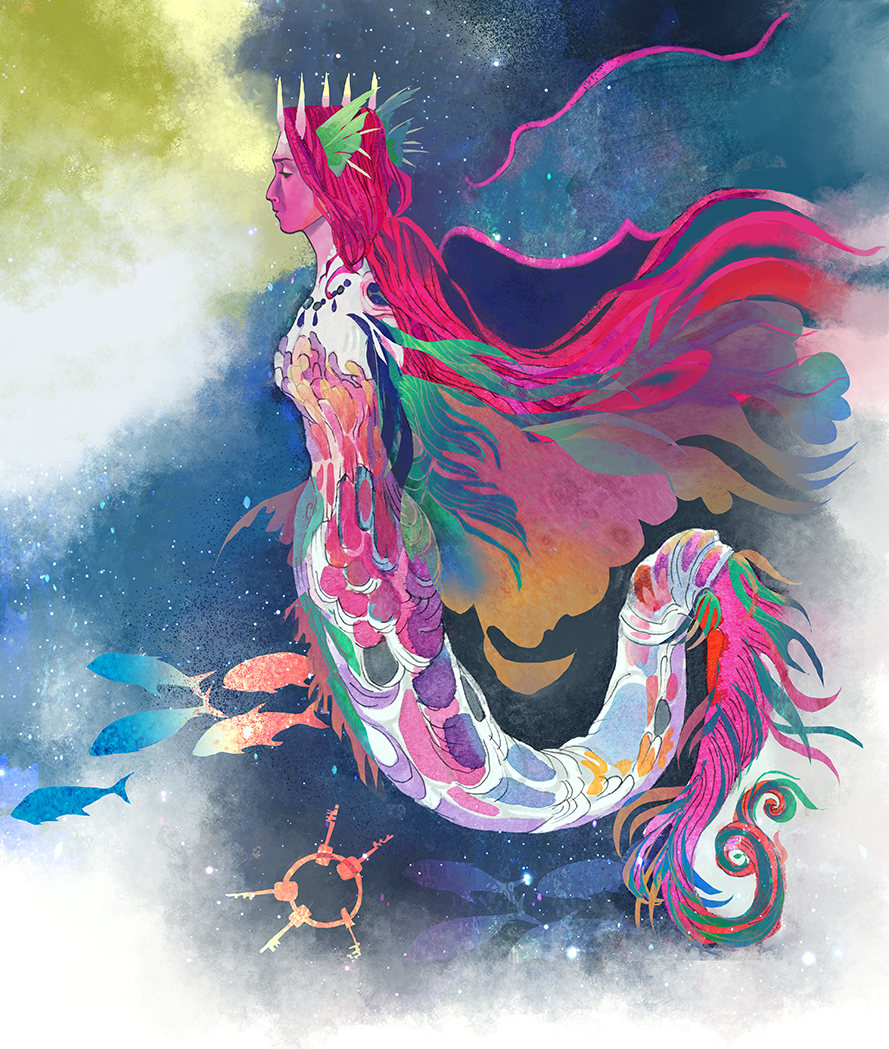Exploring Seal Symbolism Across Cultures: Stories of Transformation, Innocence, and Fluidity
Seals in Folklore and Mythology: Symbolism and Significance
(Art by Shannon VanDenHeuvel on Unsplash)
The etymology of the word "seal" can be traced back to its Anglo-Saxon roots, where it originated from the term "seolb," which translates to "to drag." This is believed to be a nod to the seal's distinct movement when it is on land.
Another possible origin of the word comes from the Old English seolhbæð, which translates to "seal's bath," a beautiful and poetic reference to the vast and boundless sea these graceful creatures inhabit. Indeed, merely labeling the seal's movement in the ocean as agile and swift would be a gross understatement. With their fluid and effortless motion, these creatures embody a true sense of elegance that inspires awe.
Due to their human-like qualities, seals have long been the subject of anthropomorphism, as their curious and intelligent nature lends itself to stories and legends that depict them as almost human-like. In many of these legends, we witness humans transforming into seals and vice versa, blurring the lines between our two distinct worlds. Take, for instance, the myth of the sea deity Poseidon, who bestowed upon the humble shepherd Proteus the divine title of "god of the seals," granting him the ability to shift seamlessly between any form he so desired.
Seal Symbolism in Ancient Greek Mythology
(Image from Unsplash)
Greek mythology is rife with tales of young women transforming into seals to escape unwanted advances from amorous deities. Perhaps the most renowned of these legends is that of Psamathe, a Nereid or sea nymph, who underwent a wondrous transformation into a seal to evade the clutches of the relentless king of Aegina.
It is worth noting that in Greek, the name Phocus, borne by the prince of Aegina, translates to "seal," adding an extra layer of symbolism to this fable. While the tale carries great intrigue and allure, it does come with a cautionary note of a potentially sensitive nature, warranting due discretion when researching it further.
Seal Symbolism in Indigenous Cultures of the Americas
Seals have held significant cultural significance for indigenous communities across the Americas, particularly among the Northwest Coast tribes. These creatures are seen as symbols of prosperity and abundance, embodying the notion of wealth in the natural world. The Nootka and Makah tribes held seals in high regard, recognizing their mastery and safety, and frequently depicting them as symbols of strength and protection on their sailing expeditions.
Seal Symbolism in the Inuit Culture: The Goddess Sedna and Innocence
(Image by Daniel Torobekov from Pexels)
For the Inuit culture, seals hold a special place as representatives of innocence and purity. Such is the significance of these creatures that in translations of the Bible into the Inuktitut language, the word for "seal" has been used in place of the more conventional "lamb." Moreover, the Inuit people hold the seal in high regard as a symbol of their sea goddess, Sedna. According to legend, Sedna's father rejected her as a baby and cast her into the sea, assuming she would perish. Yet, the sea creatures embraced her as one of their own, and she ultimately ascended to the status of goddess. Though the stories of Sedna's origin vary, they all speak to the transformative power of the natural world and the resilience of those cast aside. Through the seal and their sea goddess, the Inuit honor the interconnectedness of all beings and the enduring spirit of survival.
Seal Symbolism in Hawaiian Legend
The monk seal holds a special place in Hawaiian culture, revered as a graceful and intelligent creature with sacred ties to the creator god Lono. Beyond their spiritual significance, the monk seal is also esteemed as the protector of human souls in the afterlife. Legend has it that the shark god Kua once cursed a pair of lovers, turning the woman into a monk seal and the man into a butterfly, making it impossible for them to be together. However, Kū, one of the four Hawaiian great gods, took pity on them and reunited them in their human forms.
Seal Symbolism in Northern European Folklore
The Seal People: The Restless Longing of the Mysterious Selkies
(Art by yanadhyana)
Woven deep within the tapestries of Irish, Scottish, Icelandic, and Scandinavian folklore lie tales of the mysterious and enigmatic Seal People, better known as Selkies.
These elusive beings, who can take on either male or female form, have the power to transform their bodies into that of a seal when they enter the water. However, what sets them apart from their mermaid counterparts is that they undergo a complete metamorphosis, taking on the form of a human when they come ashore.
Legends have it that selkies are afflicted with a restless longing for that which they cannot have, an unquenchable thirst for the unknown. When they are in the water, they yearn to be on land; when on land, they pine for the sea. This affliction is said to be a curse, a punishment for their unrelenting desire to possess all that is beyond their reach. Nevertheless, the selkies' mysterious and compelling presence in folklore continues to captivate and enthrall, evoking the powerful allure of the unknown and the ever-present yearning for what is just out of reach.
Seal Symbolism in Norse Myth: Heimdall, Loki, and Freya's Necklace
In Norse mythology, a tale of an intense battle between Heimdall, the gods' watchman, and the cunning god Loki involves the appearance of a seal or sea lion. Loki attempts to pilfer a magical necklace from the goddess Freya's palace, and Heimdall sets out to save her and the necklace. The two engage in a shapeshifting duel, with both gods taking on the form of seals. Ultimately, it is Heimdall who emerges victorious and succeeds in rescuing the precious necklace. This Norse legend illustrates that the sea lion was an emblem of transformation and agility, even in ancient times.
Inviting the Seal Within
(Image from Unsplash)
There is something captivating about the sleek, elusive creatures known as seals. Whether you have encountered them in the wild or simply admired their playful antics from afar, a sense of mystery and magic surround these animals.
Do these enigmatic creatures hold any special meaning for you?
How has the seal appeared in your life, and what significance do you give to these encounters?
Have seals ever made an appearance in your dreams? What message might they be trying to convey?
Whatever your experience may be, take a moment to reflect on the words that come to mind when you think of seals - words like playful, elusive, mysterious, or serene. These words may offer insight into what their visit is about.
Warmly,
Anny
Kindly note: The information included in this blog is not intended nor implied to be a substitute for mental health services. Please consult with a qualified professional to determine the appropriateness of the information for your own life experiences or if you have any questions.
References:
Nozedar, A. (2010). The illustrated signs & symbols sourcebook: An A to Z compendium of over 1000 designs. Harper.





